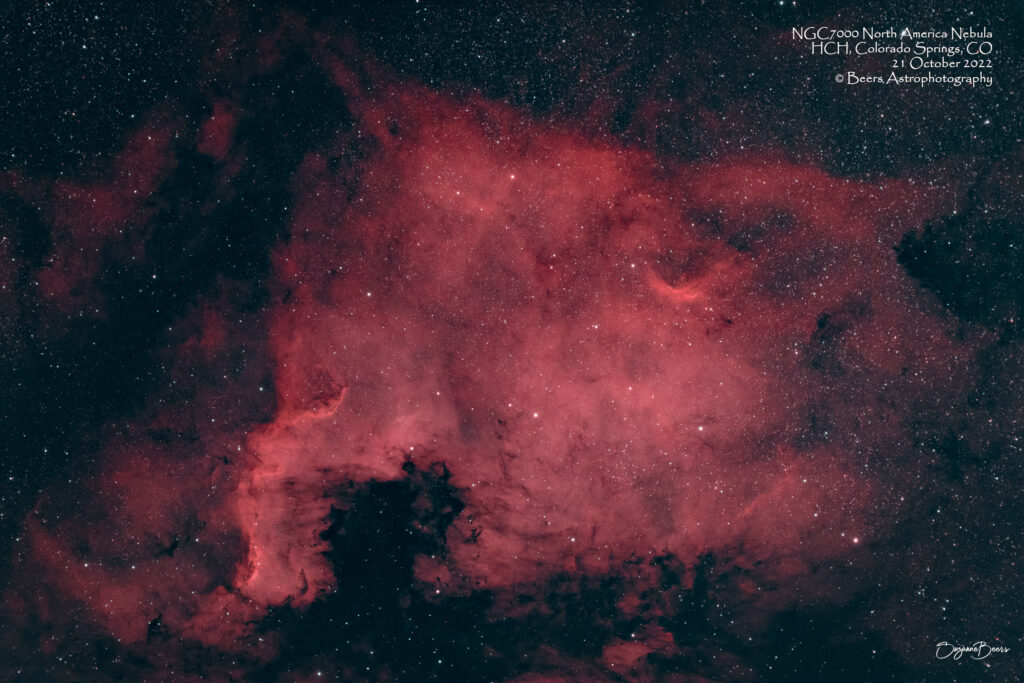
Fun facts
The North America Nebula (NGC 7000 or Caldwell 20) is an emission nebula in the constellation Cygnus, close to Deneb (the tail of the swan and its brightest star). It is named because its shape resembles North America.
The North America Nebula covers a region more than ten times the area of the full moon, but its surface brightness is low, so normally it cannot be seen with the unaided eye. Binoculars and telescopes with large fields of view (approximately 3°) will show it as a foggy patch of light under sufficiently dark skies. Its shape and reddish color (from the hydrogen Hα emission line) show up only in photographs of the area.
The portion of the nebula resembling Mexico and Central America is known as the Cygnus Wall. This region exhibits the most concentrated star formation.
At optical wavelengths, the North America Nebula and the Pelican Nebula (IC 5070) appear distinct as they are separated by the silhouette of the dark band of interstellar dust L935. The dark cloud is however transparent to radio waves and infrared radiation, and these wavelengths reveal the central regions of Sh2-117 that are not visible to an ordinary telescope, including many highly luminous stars.
Other Catalog Designations: NGC 7000, Sharpless 117, Caldwell 20
Subtype: Emission Nebula
Distance from Earth: 2,590 ± 80 light years
Visual Magnitude: 4.0
Apparent Dimensions: 2° x 1°40’
Constellation: Cygnus
{from: https://en.wikipedia.org/wiki/North_America_Nebula }
Capture Notes
Continuing with the good results from Ann Chavtur’s suggestion on the IC1805 Heart Nebula, I imaged the NGC7000 North America Nebula using the same imaging train (Ra-SC-LeXtreme). Imaged the NGC North America Nebula from dark until the main target for the evening (SH2-240 Spaghetti Nebula) rose. This is a bright target (Mag=4.0), so backed off on my standard 5 minute exposures and used 3 minute instead. Very pleased with the result – required very little processing.
Equipment
Polar alignment: QHYCCD camera (controlled by Polemaster)
Imaging stream: Askar FRA600, Canon EOS Ra with Optolong LeXtreme light pollution filter
Mount: Rainbow Astro RC-135E (controlled by iHubo)
Autoguider: Orion 60mm Multi-Use Guide Scope, Orion StarShoot AutoGuider Pro Mono Astrophotography Camera (controlled by PHD2)
All equipment controlled by HP Probook running Sequence Generator Pro v3.2.0.660.
Capture & processing notes
Sequence plan: ISO1600, 55x180sec; Total=2:45hrs. Captured 21Oct 2022, 2010 – 2304MDT;
Capture: 21 October 2022
Shooting location: HCH, Colorado Springs, Colorado
Processing: Stacked in APP, using Ha-OIII Color for stacking algorithm, due to LeX LP filter.
